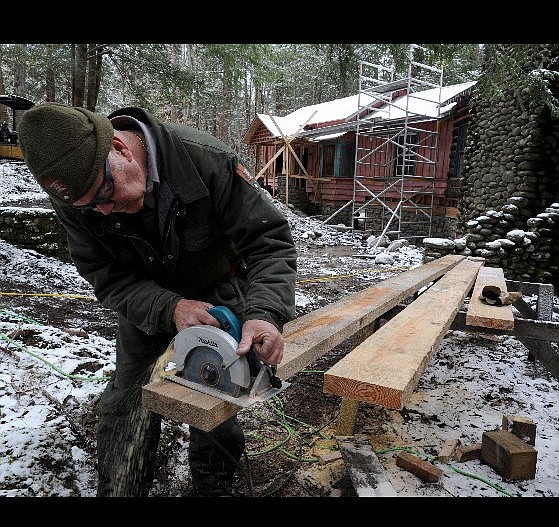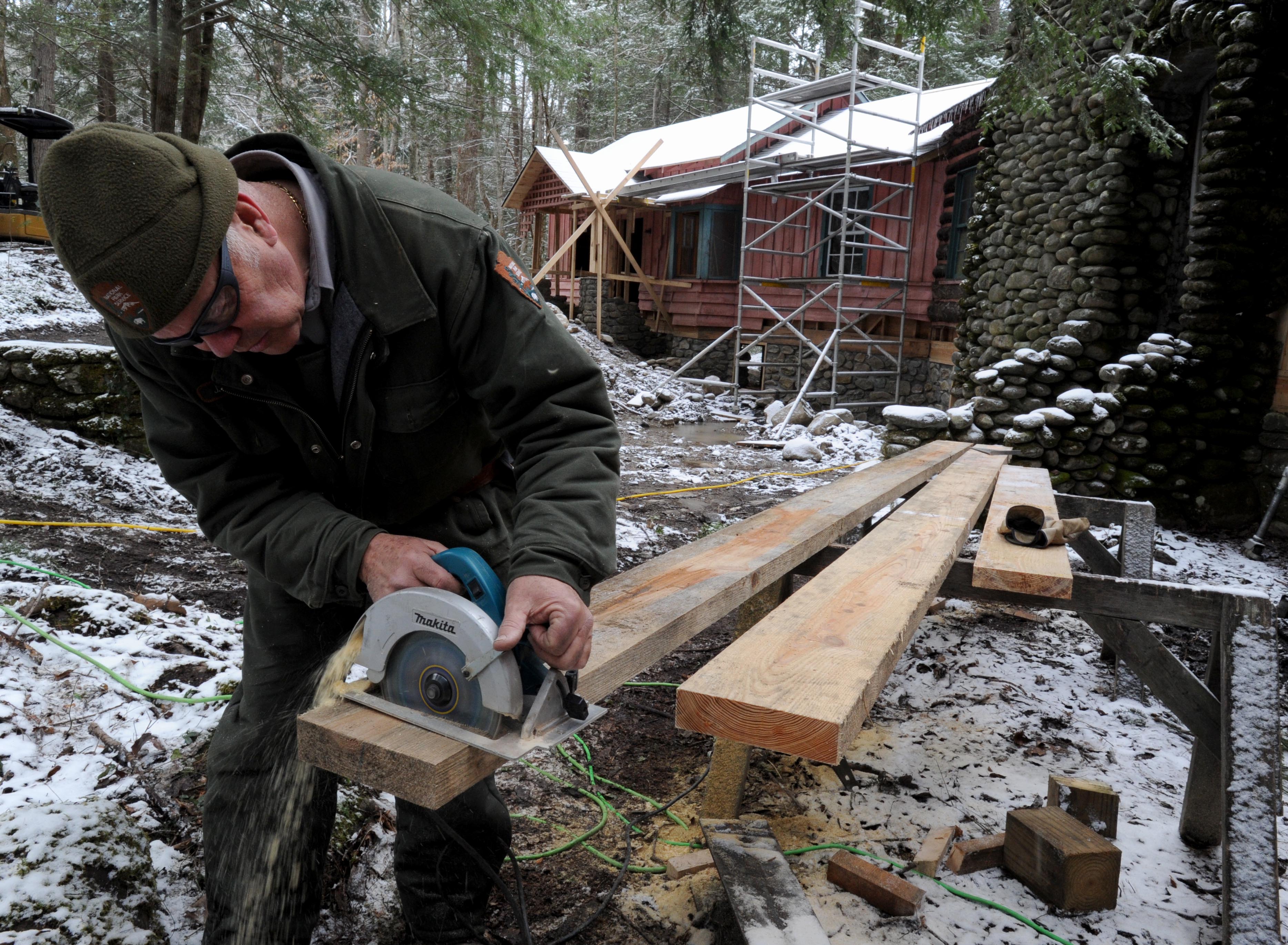MARYVILLE, Tenn. - Great Smoky Mountains National Park continually looks to the past for guidance on maintaining and preserving its historic structures - many from the 1800s - into the future.
"There are almost a hundred historic structures in the park," said park spokeswoman Molly Schroer. "We have a very small crew considering the large amount of work that goes into the maintenance and upkeep of these special areas."
The park holds many buildings from years past -- gristmills, schools, churches, outbuildings, barns, houses -- that must be preserved or rehabilitated. It takes specialized knowledge, Chief of Maintenance Alan Sumeriski said.
"We have seasoned craftsmen here," he said. "They have been doing this work for years. We have a small crew. They use a variety of hand tools. Not many power tools in their business."
Randy Hatten, program manager for historic structures and preservation, manages the historic preservation shop. The park also employs a cultural resource specialist to guide all the evaluation that goes into a design plan. There is research into the date of the structure and to understand construction methods and materials. For example, the park will send a sample of paint to a laboratory for analysis to determine the original color of a building.
"My staff are specialists," Hatten said. "They are trained in historic preservation and techniques."
Giving a tour of the Elkmont Historic District, Hatten pointed out some of the challenges that craftsmen face trying to restore historic structures. He gestured at a nearby cabin. "The materials and construction methods have vastly evolved since the day this was built," he said.
In particular, Hatten pointed out the makeup of the windows. "That is hand-rolled glass," he said. "Modern glass is very, very flat, and you don't have that distortion."
The park is only able to get hand-rolled glass from one source, a company in New Jersey. Another challenge might be matching the lumber used in construction of a building. Some species of trees, such as chestnut, are no longer available, Hatten said.
Working with the historic structures gives Hatten much to appreciate. He said he enjoys the appearance of old timber. "I enjoy the patina of the wood as it ages and colors. It's matchless."
Dealing with historic techniques and structures can pose a challenge to some of today's workers, Sumeriski said. "It's a dying craft. These craftsmen are well-experienced, and oftentimes they have to educate the structural engineers. It's an interesting phenomenon when you start into historic structure design and rehabilitation."
The historic preservation crew has three or four permanent employees to handle all the historic structures in the park. "They've got a lot of work to do," Sumeriski said.
The National Park Service has established the Preservation Assistance Program in Harpers Ferry, W.Va., in which several park employees have been enrolled. It was founded in 1977 to help meet the growing demand for the craft skills needed to preserve historic structures. Enrollees learn and share the techniques to deal with timber-framed structures, water wheels and other historic structures.
Historic structures in the park were built anywhere from 1822 to the 1960s. "Anything more than 50 years old is a historic structure," Hatten said.
One of the most recent preservation challenges for the park was the decision to preserve 19 buildings in the Elkmont Historic District. The rest will be removed. In 2009, the NPS signed off on the plans.
The establishment of the Little River Lumber Co. in the early 1900s led to industrial logging in the area. The Elkmont community developed between 1908 and 1925, promoted by logging interests. Two private resorts -- the Appalachian Club and the Wonderland Club -- were established. Between 1910 and 1940, a hotel, a clubhouse and dozens of vacation cabins were built in the district. The Elkmont properties were occupied until the last of the leases expired in 2001.
So far, rehabilitation of the Appalachian Clubhouse and Spence Cabin have been completed. The clubhouse was used as a gathering spot by the Appalachian Club whose members, mostly from Knoxville, built rustic cabins nearby to serve as weekend or summer retreats in the years before the park was created.
"We feel like we've made great strides here at Elkmont in the past five years, and we hope to make great strides in the next five years," Hatten said.
The 3,000-square-foot, one-story clubhouse features a large, open meeting hall with exposed wooden beams and massive stone fireplaces at each end that are equipped with gas logs. It is lighted by period-type fixtures suspended from the ceiling and with wall-mounted sconces. French doors along the entire east side open onto a broad, roofed porch overlooking the forest and a small creek.

